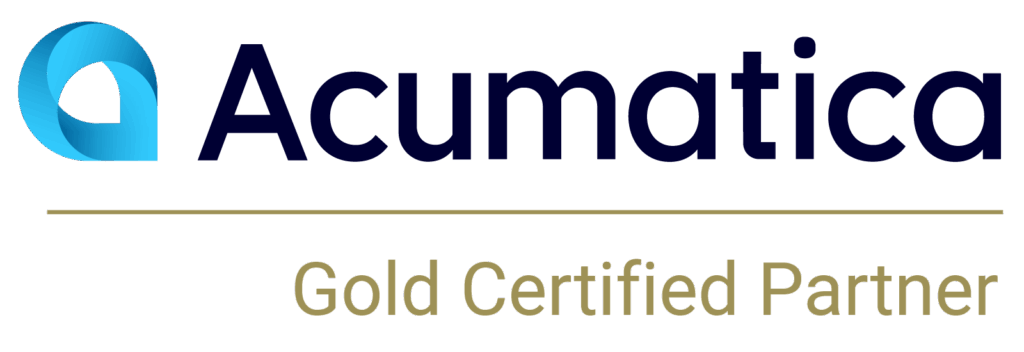In the not-so-distant past, ERP implementations had a bad reputation — some even ended in epic failure. We see this changing, as all parties involved (VARs, publishers, and customers) do a better job of setting expectations, planning, executing, and following through. At Caron Business Solutions, we work to keep our ERP implementations on the right track by using project management Key Performance Indicators (KPIs) to measure the project’s performance. Let’s explore six of the simple yet powerful KPIs you can use to measure the success of your ERP implementation.
- Cost Variance: “Is this project costing more than we planned?”
A primary concern in any project is the budget. Cost variance is a critical KPI that tells you whether the project stays within the financial boundaries set at the outset. If your expenses surpass the budget early on, it’s a red flag that requires immediate attention. A healthy ERP project will stay within a reasonable range of its predicted costs, keeping those surprise expenses to a minimum.
The formula for calculating this KPI is simple: subtract the budgeted cost of the project from the actual cost. In practice, determining whether your project is on track financially is a bit more complicated. It can depend on the payment structure you’ve agreed to and the schedule of tasks, for example. A skilled ERP VAR will monitor the budget continually — and you should, too.
- Timing Variance: “Are we missing key dates?”
Timing variance measures whether your ERP implementation milestones are being met as scheduled. Delays can have a domino effect, pushing back your go-live date and potentially increasing costs. By monitoring this KPI closely, project managers can spot delays early and apply corrective measures to keep the project on its temporal rails. This KPI tracks the progress against the original project timeline. Are milestones being met, or is your project timeline more of a ‘guideline’? Regular check-ins and agile adjustments keep your project on schedule.
The official formula for calculating timing variance is subtracting the budgeted cost of work scheduled (BCWS) from the budgeted cost of work performed (BCWP). BCWP is also known as planned value — the budget you plan to spend on the project activities by a specific date. A more straightforward way to come into this KPI is to simply compare the project’s list of tasks against the dates you expected to complete them.
- Functionality Variance: “Is the system doing what we thought it would do?”
The whole point of an ERP system is to streamline your operations. Functionality variance measures whether the ERP system’s features are performing as intended. For example, were you anticipating a seamless consolidation process but find yourself still grappling with spreadsheets? Ultimately, this KPI measures how thoroughly and realistically your implementation team established and set expectations surrounding how and when you could achieve specific business needs.
Functionality Variance has no standard formula like cost or schedule variances because it’s qualitative and somewhat subjective. But, as the adage goes, “You’ll know it when you see it.”
- User Adoption Rate: “Are our employees using it?”
An often-overlooked aspect of ERP implementation is the user adoption rate. This KPI measures how quickly and effectively your team transitions to the new system. High adoption rates indicate that the ERP is user-friendly and meets employee needs, leading to higher productivity and job satisfaction. Conversely, a low adoption rate could signal the need for additional training or system customization.
Here’s another simply calculated KPI: compare the number of users you expected to use the system with the number actually using it.
- Data Migration Success: “Is our imported data accurate?”
The data migration success rate is a KPI that ensures that critical data is transferred accurately and completely from old systems to the new ERP solution. Integrity in this area prevents leaks and ensures your decision-making is based on solid, reliable information.
You can assess data quality through metrics such:
- Accuracy: The percentage of data entries that have no errors.
- Completeness: The percentage of datasets that are fully populated.
- Consistency: The percentage of data entries that are consistent across different systems.
- Return on Investment (ROI): “Did our move pay off?”
A positive ROI is everyone’s goal for an ERP implementation. This KPI assesses the financial gains relative to the cost of the ERP system over time. Calculating the ROI of an ERP implementation is easier said than done. To calculate an accurate ROI, you’ll need to identify and summarize total costs, including software, hardware, and implementation, and then identify and summarize benefits, including efficiency gains, increased sales, operation cost savings, inventory reductions, and improved data utilization.
Since the ROI of an ERP implementation can be so complex to calculate, some companies opt for alternative ways to think about their ROI. Here are a few:
- Value Realization: Companies may focus on whether the ERP system is helping them realize strategic business values, such as entering new markets or improving customer experience.
- Performance Metrics Improvement: Organizations might look at the improvement in key performance metrics influenced by the ERP, such as order fulfillment time, inventory turnover rates, and financial close cycles.
- Total Cost of Ownership (TCO): Companies may also consider the total cost of ownership over a period of time. This includes all direct and indirect costs of implementing and maintaining the ERP system.
- Break-Even Point: Some businesses may calculate the time it takes to recover the cost of the ERP investment. While this is related to ROI, it focuses on when the benefits will start to exceed costs rather than a percentage return.
- Competitive Advantage: The competitive edge gained through an ERP system, such as improved real-time decision-making or enhanced customer service, might be hard to quantify but can be a significant part of the ROI narrative.
- Qualitative Benefits: These include improved employee morale from reduced workload due to process automation, better compliance and security, and improved data accuracy.
- Business Agility: An ERP can help companies become more agile, allowing them to quickly adapt to market changes or regulatory requirements, which can be a substantial return, though difficult to quantify.
- Customer Satisfaction: Improvements in customer service can be a sign of positive ROI, as happy customers are more likely to be repeat customers and provide positive referrals.
Implementing an ERP system is a significant investment in time, resources, and the future of your business. With these KPIs, you have a map and compass to better navigate the implementation process. We’re here to guide you, ensuring that your new ERP system becomes a transformative tool that propels your business forward. Contact us to start a conversation



